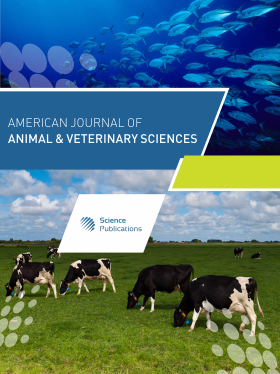Improving Rumen Fermentation by Inoculation of Cellulolytic Bacteria Isolated from Anoa, Bison, Muntjak and Timor Deer Faecal
- 1 Department of Nutrition and Feed Technology, Faculty of Animal Science, Bogor Agricultural University, Jl. Agatis Kampus Fapet IPB Dramaga, Bogor, West Java, Indonesia
- 2 Faculty of Animal Science, Jambi University, Jl. Jambi-Muara Bulian KM 15 Mendalo Indah, Muaro, Jambi, Indonesia
- 3 Faculty of Animal Science, Jambi University, Jl. Jambi-Muara Bulian KM 15 Mendalo Indah, Muaro, Jambi, Indonesia
Abstract
Tropical endemic herbivores such as anoa (Bubalus depressicornis), bison (Bos javanicus), muntjak (Muntiacus muntjak), and Timor deer (Rusa timorensis), can digest various types of fibrous feed because their digestive tract has high cellulolytic bacteria and those can be found in their feces. Previously, we isolated and identified cellulolytic bacteria from the feces of anoa, bison, muntjak, and Timor deer. This study aimed to examine the use of a consortium of cellulolytic bacteria originating from feces of anoa, bison, muntjak, and Timor deer in the in vitro rumen fermentation and their effect on digestibility and fermentation properties. The in vitro study was conducted using beef cattle rumen fluid with 4 treatments and 5 replications in a Completely Randomized Design (CRD). The treatment including Control (T0) = Forage: Concentrate 60: 40, T1 = T0+105 CFU/mL cellulolytic bacteria, T2 = T0 + 106 CFU/mL cellulolytic bacteria, T1 = T0+107 CFU/mL cellulolytic bacteria. Variables measured were dry and organic matter digestibility, crude fiber digestibility, rumen pH, formation of Ammonia (NH3), Volatile Fatty Acids (VFA), microbial population, and methane estimation. The results showed that the addition of cellulolytic bacterial consortium isolated from anoa, bison, muntjak, and Timor deer feces increased dry matter digestibility, crude fiber digestibility, total VFA production, and total bacterial population. Rumen pH, ammonia production, proportional VFA, and methane were similar among treatments. Inoculation of the cellulolytic bacteria consortium at level 106 CFU/mL was the optimum level to improve fiber digestibility and had a beneficial effect for ruminants that fed high-fiber feed.
DOI: https://doi.org/10.3844/ajavsp.2023.284.291

- 3,506 Views
- 2,260 Downloads
- 0 Citations
Download
Keywords
- Cellulolytic Bacteria
- Rumen Fermentation
- Microbe Population
- Tropical Herbivore
